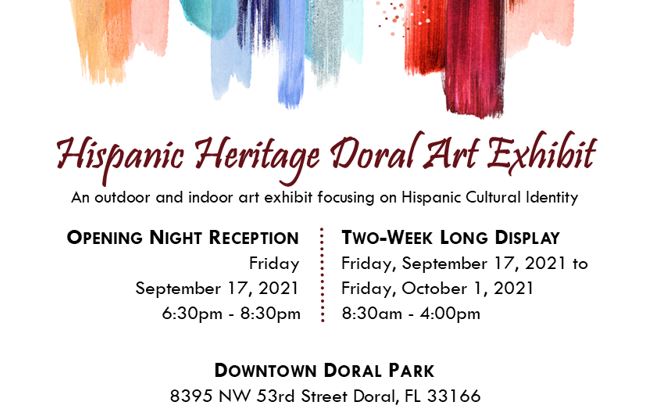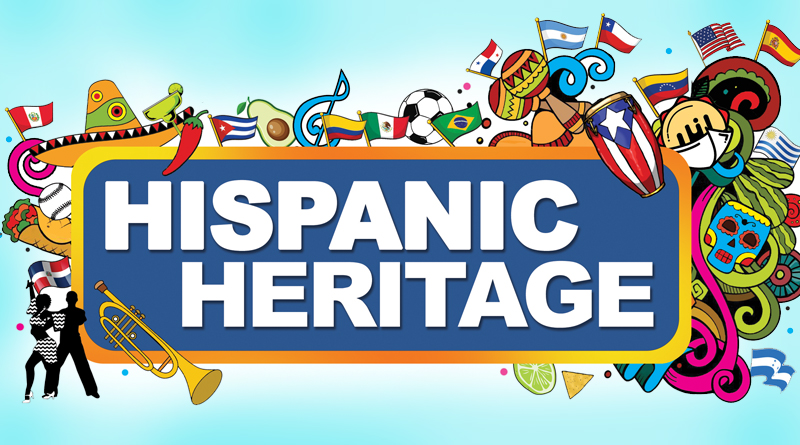Time to Celebrate the Hispanic Heritage
By: Grecia Romero
September is arriving, and it’s loaded with tons of celebration flavors, colors, aromas, and traditions of the Hispanic Heritage Celebration in the United States. Every year from September 15 to October 15, the influence of Hispanic Americans in the United States’ history and culture is celebrated with great splendor and pride.
This originally week-long celebration was born in California and was established in 1968 by President Lyndon Johnson. It became a national occasion which was extended to a month-long celebration under the mandate of George W. Bush in 1989. It beginning purposely on September 15 to commemorate the independence of several Latin American countries such as Costa Rica, El Salvador, Guatemala, Nicaragua, Mexico, and Chile.
This celebration was created to honor Hispanic Americans— active or fallen in the national armed forces— for their outstanding contribution to the defense of the nation; some were even awarded the Medal of Honor. At the same time, the celebration seeks to acknowledge the considerable increase in number of American soldiers with Hispanic descent in recent years, from 3% of the total number of active soldiers in 1985, to 16% in 2019, according to the U.S. Army statistics.
Hispanics Population on the Rise
The Hispanic population continues to grow. The 2020 U.S. Census numbers have shown a striking difference in the number of Hispanics compared to the Census ten years ago.
According to the last year’s Census, the Hispanic population reached 61.3 million people. That means the Hispanic population is the second-largest racial group in the nation, taking up 18.5% of the total population compared to 16.3% in 2010. This is a booming difference from the 5% Hispanic population in 1970.
Carolina Piernavieja, leader of Girl Scouts Troop 552 in Doral, and an enumerator in the 2020 Census was surprised to see the number of Hispanics in places like Opalocka in Miami Dade. She said this showed her the importance of valuing her Hispanic culture.
“It was not a surprise to know the number of Hispanics living in the City of Doral, but the extension in other parts of the county,” Piernavieja said. “This experience made me reflect that I have not valued my Hispanic legacy enough.”
Piernavieja added that this may be because of living in a city like Doral, which does not require an extraordinary effort to understand what being a Latino means without leaving one’s comfort zone. “I mean language, food, cultural traditions, and religion. When traveling, one realizes the great value of being Hispanic, the human quality, the typical generosity of our countries, and little details such as even opening our home’s doors to new friends.”
For Piernavieja, the results of the 2020 Census were predictable since she knew that 1 in 5 Americans is Latino. For her, the Hispanic celebration is a good time “to well represent our countries and talk about all the wealth that they bring in literature, gastronomy, and folklore.” As a Girl Scout leader, she plans to include a Hispanic Heritage patch to teach young women the importance of learning more about their heritage and to be proud of it.
The increase of 11.6 million Hispanic inhabitants continues to have a palpable effect in the United States.
Marjorie Yanes, a Hispanic-American business owner in Miami, has endeavored in the import and export industry over the last 20 years. She said these effects are evident in the economic, political, social, and cultural sectors.
“The effect of Hispanic immigration is undeniable and will continue to change and shape the country as time goes on,” said Yanes. “On the political side, for example, it has become evident how the Hispanic population has a great power of influence in the elections, not only local but also general, as well as the number of representatives in Congress.”
In Yanes’ opinion, the increase in the Hispanic population has received great attention from the government because it is not only large but versatile.
“For years there’s been an effort to place Hispanics in a single group, but the diversity of the Hispanic population has little by little changed aspects that were previously general, such as the belief that all Hispanics come from only one country. Over time, there has been a teaching process and there is greater awareness that the Hispanic community has different points of view, education, religion, socio-economic and political backgrounds and this will influence the country in the short and long term.”
Hispanics occupying formal jobs in recent years, getting university degrees, and maintaining the Spanish language as a competitive aspect in the labor field, is another example of the Hispanic effect in the country.
Additionally, as Yanes also points out, the Hispanic prevalence favors the economy since the great diversity of Hispanic foods and flavors has motivated investors to open restaurants with different types of cuisine, not only making known the culinary variety of all countries but encouraging the importation of many products, fruits, and vegetables to meet the demand. All this positively contributes to the economic growth of the country.
As can be seen, the Hispanic effect will continue to give something to talk about, and fortunately not for the immigration part. This is how celebrating Hispanic Heritage Month can potentially gain more strength and pride among the Spanish-speaking population.
 Celebrating Hispanic Heritage with Pride
Celebrating Hispanic Heritage with Pride
The Hispanic Heritage is not only a celebration located in the most crowded areas of Spanish speakers. It is a national holiday in which special activities are exposed: its music, literature, gastronomy and much more.
The city of Doral, with an 85% Hispanic population according to the latest Census, has been very active in observing this celebration. Year after year, it has brought together Hispanic talents from Spain, Latin America, and the Caribbean to demonstrate their talents in order to continue consolidating the Hispanic legacy in the new generations.
Although the pandemic situation has affected the celebration in the city, an outdoor exhibition is planned with local artists who will demonstrate in their works what their heritage of Hispanic origin means to them.
This exhibit will be open to the public for one month at Downtown Doral Park. The premiere reception will be held on Friday, September 17 from 6:30 pm to 8:30 pm and the dates for the exhibition will be extended until Friday, October 1.
A variety of events will also be offered in different states, in-person or virtual, from a colorful festival in Arkansas, a Latin Jazz Festival in New York, exhibitions and events organized by the Smithsonian Group in Washington D.C., film festivals, and parades.
The most important thing in this celebration is to transmit the heritage and cultural legacy to the following generations: the language, customs, family values, among others. This can be done despite the circumstances with simple and even family events that include food, music, manual decorations, and even stories and songs in Spanish.

